There is untapped potential in YouTube for you and your business. I guarantee it. While you’re about to learn how to capture some of that potential in today’s episode. My guest, Evan Carmichael, spoke recently to us members of Genius Network, and he blew our minds. Evan is so down to earth you’d never know meeting him that he’s a super successful serial entrepreneur with a YouTube channel that boasts 390 million views. He’s got this warm, quirky charm, and starting from the age of 19, an incredibly impressive entrepreneurial success story.
In today’s episode, we dive in how to split test video titles and thumbnails, online course strategies for YouTube, and so many tricks and hacks, ethical hacks, of course, that will help you increase your subscriber base and reach on YouTube. When it comes to the YouTube algorithm, it’s not about views, it’s about watch time. Evan has cracked the code when it comes to this. There are so many smart data driven decisions you can make when you understand how YouTube works.
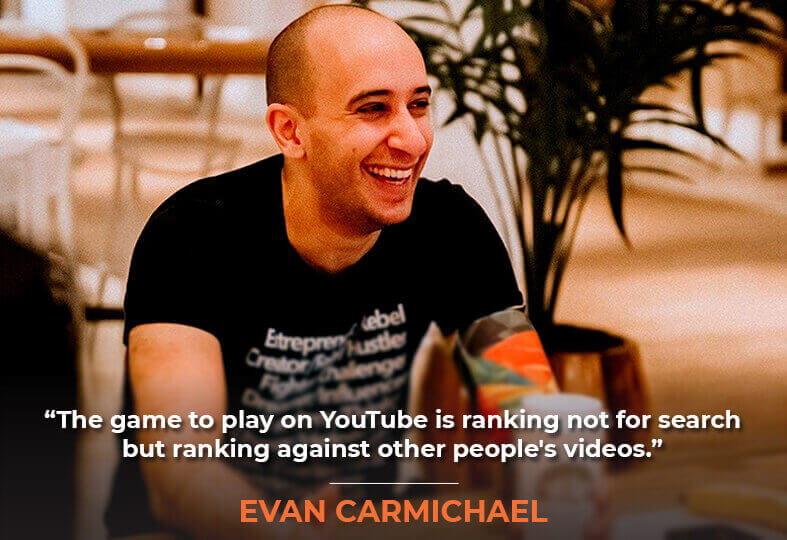
In this Episode
- [00:30] – Stephan introduces Evan Carmichael. He built then sold a biotech software company when he was 19. At 22, he was a venture capitalist and raised $500K to $15M. He now runs a YouTube channel for entrepreneurs with over 2 million subscribers.
- [07:18] – Evan shares TubeBuddy, a tool he uses to split test his YouTube videos’ titles and thumbnails for optimization.
- [13:40] – Evan discusses the split test they did on an eight-year-old video where changing the thumbnail had more than a 300% increase in the click-through rate.
- [20:52] – How to engage through comments and make the people watch your video longer on YouTube? What is an audience retention curve?
- [26:37] – Subscribe to Evan Carmichael’s YouTube account, and visit his website at believe.evancarmichael.com to check out his course, YouTube Bootcamp, to learn how to grow your YouTube channel.
Transcript
Let me give you an example that Evan shared at Genius Network but that we didn’t get to in this episode. Record your interviews on Instagram Live not YouTube Live because once the live stream has finished, YouTube’s algorithm doesn’t give your video any more love. Whereas with an Instagram Live, you get exposed to that person’s audience as well as your own. So if you interview an Instagram influencer, their audience gets an announcement of the live stream and thus you get exposed to all these new people while the live stream is happening. After you’re done with the interview, simply download the recording change from vertically stacked videos to position side by side, cut any pleasantries and fluff from the beginning, add a teaser clip at the beginning that starts your video out strong with something compelling, maybe even controversial. And now you have a video that’s evergreen. And a bonus tip, offer live coaching sessions on Instagram, because not only do you get exposed to that person’s followers, you get to show off your vast knowledge and your ability to think on your feet. It’ll impress prospective clients so much more because they’ll know you didn’t have any prep time. Isn’t that amazing? So get ready for plenty more YouTube knowledge bombs and a spontaneously good time with Evan Carmichael. Let’s do this!
Live coaching sessions on Instagram are not only getting you exposed to the person’s followers. You also get to show off your vast knowledge and your ability to think on your feet.
Thank you so much for joining us today, Evan. If you could maybe share with us a little bit of the secrets to success around YouTube. Specifically, I am so impressed with the reach that you have attained. You’re almost 400 million views on your YouTube channel. And my understanding from your presentation at Genius Network was that it’s mostly from the recommendation engine and not from YouTube search.
Thanks for having me, Stephan. It’s great to be here. And I come from the SEO world, similar to you. I mean, my background was I had a website of my name, we had a hundred thousand pages of content, and it was just about getting those pages ranked through search, and converting people and ads, and in signups for ebooks and all that kind of stuff. And when I went to YouTube 11 years ago, so it’s been a while on the platform, I applied the same methodology. And then I realized, why am I taking so long to grow? It took me five years to get the 7000 subscribers from zero to 7000 subscribers, five years. And then five years ago, from 7000 to 2 million, and now we’re at 2.6 or whatever. So why is it taking so long to grow? Because all the stuff that I’m doing in my SEO Google, like Google is YouTube. Why am I not growing the same way?
I realized that most views on YouTube don’t come from search. Most views on YouTube come from the recommendation engine from suggested, which is unlike typical SEO. So the game to play is ranking not for search but ranking against other people’s videos. So if you think about your own search experience or your own YouTube experience, you might search for something like, “how do I XYZ,” and you put that in. How do I do Google SEO, that could be a search query, and you watch one video, but then YouTube’s gotten so smart at recommending videos to you. You’ll go and watch 7, 8, or 9 more videos that have been automatically recommended to you that you never hit back to go watch from the search results anymore. It’s not that search is dead or search isn’t valuable. It is still the second largest search engine; you probably heard that a million times. It’s true. It’s just that most of the consumption doesn’t happen from search. When I realized that, and I was seeing other channels grow through the suggested, and the browse, I was like, “Okay, I need to hack this.” It’s still the game of how do I rank. We’re just ranking against other videos, not trying to rank in search.
Optimizing is a factor a lot of entrepreneurs can miss out on. It’s not that complicated, but it does require a little shift in mindset. Share on X
Right. So I would be so focused on dialing in all the YouTube SEO things like the SRT file, making sure everything is correct in that, and then uploading foreign language translations so that you’ll be searchable in foreign languages for the video and the titles and doing the tagging, and the hashtags and all that. And what you’re saying is that that’s all fine and good, but where the gold is cracking the YouTube recommendation engine.
Yeah, and also, most of that isn’t finding good. What you just said doesn’t make a difference anymore. Like what you call the file doesn’t matter, hashtags are zero. Because a lot of SEO marketers came in and kind of ruined it, right? Like you’ll put in the hashtags or things that aren’t relevant. The ethical ones, but everybody else kind of joins in. So YouTube, they make the decisions on what to show based on the viewing habits and patterns of people, much more than what you classify something to be. So the game for showing up suggested from an SEO perspective is more about the title, I would focus on the title more than anything else. I would try to pick a title that is related to a similar video. So the way to hack it is, whatever topic you’re going to make a video on, “How to rank in Google in 2020,” if that’s going to be the title that you’re going to make a video on, right? Which is great, like people go to YouTube to figure out how do I rank in Google? And your video could show up. That could be the ideal title that you’re thinking of and has all the keywords you’re looking for.
Developing a consistent theme and style also trains people to know what your video is about and what a comical video looks like.
What I would do is go to YouTube, actually put that in, and then look at the videos that show up. Your goal is not so much to show up for that term, but on those videos, I want to show up after them. So it’s tweaking your title to match a popular video so that they’re gonna watch their video and they’re gonna watch your video. I just assume you can make a better video because you have deeper knowledge than whoever is kind of right ranking number one for it anyway. That’s how you start to hack the audiences. So they’ll watch that person’s video because yours have a similar title, you have a better chance of showing up afterward. And then they’re like, “Oh my god, who’s this Stephan guy.” And then they keep watching more and more and more of your videos, you get recommended more and more and more and more and more as well. And so it’s still the game of ranking. It took awhile for me, it took me five years too long to figure that out. But you can apply all of those skills. I love making data-driven decisions. We’ve done over 4000 split tests on titles and thumbnails to try to optimize them as much as possible. So optimizations is super important, and most people don’t do it. It just requires a little shift in the mindset.
Let’s talk about how to split test into titles and thumbnails.
How I do it is we use a tool called TubeBuddy, I’m not associated with the company apart from being a massive customer. We will put up a video, and then one week later, we’ll test the different thumbnail and title combination. We start before we release a video. YouTube has a thing called the Community tab, where you can talk to your community. And we’ll post in our Community tab, “Hey, which title do you like better?” and whatever they pick, that becomes what we put on our thumbnails or title for the video. So we’re already using a little bit of our user data before it even goes public.
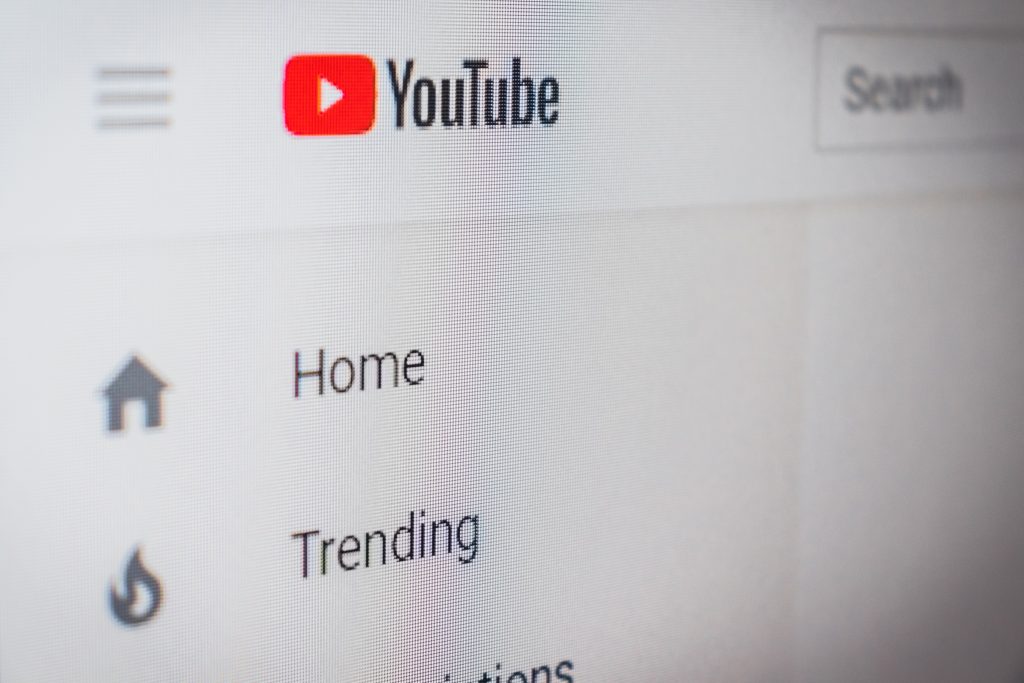
Then one week later, we will launch the video, and then a week later, we’ll do the TubeBuddy split test, which will put one thumbnail versus the other or one title versus the other. And it’s not a perfect AB. It’s one day at a time. So day one will be version A, day two will be version B, and then day three version A, until you get enough data for it to say hey, this version beats this version. And it’s led to a lot of changes and insights that I wouldn’t have predicted or thought. But again, it’s not about what I like, it’s about what the audience wants and in that combination. So it takes away a lot of the art of trying to figure out what to come up with, but less of a “Well, I think this is good,” or “I don’t think this is good” takes the opinions out of it to say, “Okay, well, let’s try it.” and see what people resonate with, and then we’ll go with the winner.
What would be an example of a title and thumbnail that you’ve done recently that you’ve tweaked, and it was a little surprising or counterintuitive from what the data said in terms of performance?
Tweak your title to match a popular video so that they’re gonna watch their video and your video as well.Evan Carmichael
There are two that come to mind. One, the picture that you’re using the thumbnail, we’re getting a lot better results with screencaps instead of fancy pictures. So this becomes a YouTube video having a screen capture of me doing something like this, and taking that picture and put it on the thumbnail even though it’s a little blurry even though it’s not perfect compared to taking the photoshoots that I’ve done and whatever my LinkedIn profile picture is, or all of the Instagram content that looks beautiful. The grainy, real raw, has almost always outperformed the fancy, beautiful, perfect, which is counterintuitive to Instagram. Because when you’re on Instagram, maybe everywhere else, like if we’re doing a big event, or speech or a keynote, they always use my fancy pictures, not just some random screen capture from a video, but people love the personal side. And so that surprised me. That was one of them, “Okay, let’s just run it as a test.” Like, “Oh, that one? Okay, well, let’s run ten more.” “Oh, 80% of those won, too?” Okay, let’s go update our 6000 video archive so that they all fit this method and split test along the way. So that was super shocking, and now we’ve applied across all our videos.
You have a certain style to your thumbnails that are very consistent. It’s very branded and brandable and associated with you. It’s like there’s more than just the kind of raw image taken from the video instead of a well-crafted headshot. It’s like there’s a color scheme or something that, like maybe it’s, are you using filters as well to come up with a certain color style to your images for the thumbnail?
Most views on YouTube don't come from search- it’s not typical SEO. They come from the video suggestions and recommended feed. Share on XSo we use gold, white and black, that’s my brand. I’m wearing gold, white and black because it’s my brand colors. Why it’s super important is yes, you know some of the brighter colors like the gold we max the saturation on because it stands out more to the eye, so people are more likely to click, but why it’s super important is when somebody finishes watching a YouTube video. You’ll see some videos show up after it, and then you’ll see them down the side or at the bottom, and you want to develop a style. This is how you hack the suggested algorithm or hack the ranking system is. If I’m watching a great Stephan video telling me how to optimize my website and I clicked on it because I saw your face and some texts on the side. But then there’s another video of yours that does get recommended, but it doesn’t have your face, it’s a different font, I don’t recognize it as being a Stephan video. What happens is I don’t click on it. And now because I don’t click on it, YouTube thinks, oh, people don’t care about this video, so they stop showing it.
When you develop a consistent theme and style, it’s also training people to know what a Stephan video, what a comical video looks like. So they’re more likely to click it if they like your content. And so that helps, your goal is to create a viewing pattern where if they watch one video, they’re watching 5, 6, 7, 8 videos, and so training them to know what your video looks like. There’s no perfect formula. It’s not that gold, white, and black are the magical colors. It could be some other color scheme, something bright, though that stands out. But having that consistent theme lets your viewers know, “Oh, this is his video, I want to go watch it again,” and you end up getting suggested a lot more.
As long as it is evergreen content, YouTube should be your number one home for creating content.
Yeah. And that would be why I would imagine not only for Vevo, the music video brand, that all the different artists are using. So somebody gets trained to watch music videos, and then they look for that Vevo brand logo that is in the corner. And then they click on another one and then click on another one, and they click on another one. And if one is missing, it feels like, “Is that like a homemade music video? Maybe I’m not gonna watch that one.”
Yeah, it’s like the book cover matters, right? It could be the exact same song. I was in a presentation this morning to my group, where I was showing some thumbnails, and we were split testing a thumbnail that was seven or eight years old. And we did an update to the thumbnail. I had a 300%+ increase in the click-through rate. The same video didn’t change anything, didn’t even change the title, just updated the thumbnail. 300% more clicks through on that video. And that’s also the power of YouTube where, like SEO, an older page can still rank. But unlike other social media, nobody cares about your Instagram posts from three days ago, let alone three years ago or seven years ago, right? And so YouTube, in that sense, is more like traditional SEO through Google.
More evergreen.
As long as the content is evergreen, right? Like if you’re talking about the 2020 election that may not age super well, but for most of the stuff, as long as it is evergreen content, YouTube should be your number one home for creating content.
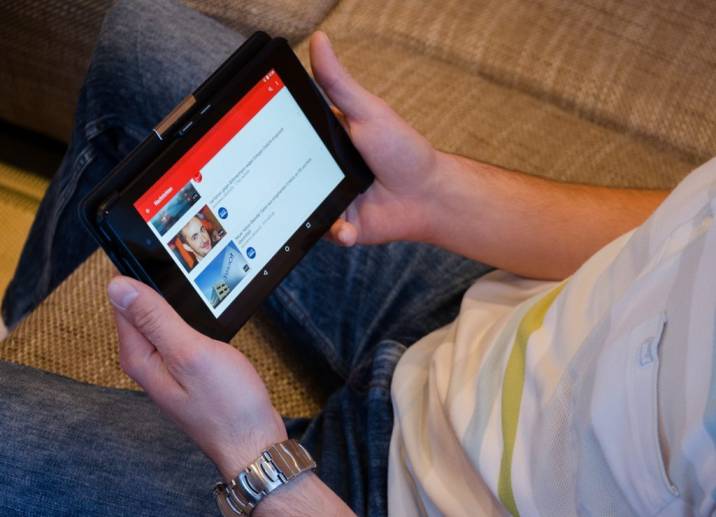
Right. Even online courses, like how would you incorporate an online course strategy into your YouTube channel?
I would take the evergreen components of it and turn that into YouTube content, also the very beginning level. So if you’re going to create a course on how to rank in Google, say that’s your course. The beginning stuff is why is SEO so important, and what are the key foundational parts of it and the history of it and the stuff that kind of won’t change. Like imagine in a year, two years, five years, it’s still like, why you should get into it is still relevant, and some of the high-level concepts behind it are still relevant. But then the specific deep tactical things that may change, I don’t know how much has changed. I’m not in the SEO web game anymore. But I don’t know much has changed in the past five years or so. That one is too high-level for a YouTube audience. You’re talking to the masses, right?
You want to have content that has a broad reach, where if you’re talking about a deep, niche linking strategy or something, it’s just not going to play to a big audience. You’re talking to like the little micro people. And that’s what you can charge for. So YouTube, you think of the ongoing kind of big, big audience, evergreen stuff that in five years he’ll be relevant. And then inside your course, is where you have the more advanced features that maybe you have to update, maybe you’re updating that course every quarter because some new thing has happened, right? That’s how I would approach it.
At the end of the video, don’t simply thank them and let them subscribe to your channel. It will make them feel like the video is ending. Instead, start teaching people that one video is not the end by pointing them to your other videos.
Gotcha. That’s great. Now there’s some little tricks and hacks, ethical hacks, of course, that will help you increase your subscriber base and will help you to get more views and more watch time and so forth. And one that you shared in your Genius Network talk I loved was when you link to a YouTube video of yours, add the &list=parameter so that it jumps right into a playlist so that the video that you chose plays first, but then the rest of the videos from your playlist are what plays next, so you get maximum watch time. I love that. It was an awesome tip. I would love to hear some more hacks or tips and tricks for maximizing view count, watch time, and subscriber numbers.
Great. So this is a great example of that little hack. If I talked about it on YouTube, it wouldn’t do well because it’s talking to a niche category versus why you should be on YouTube and why it’s so valuable right now and the basics of it, right? When you get more advanced, it just won’t play well as a specific video, but inside a course, it’s great. So other hacks, at the end of every video, it’s super important, and one thing most people don’t do, you need to tell me where to go next. So at the end of the video, don’t say thank you so much for watching, don’t say subscribe to my channel, don’t say anything that makes it feel like this video is ending because then they’re gone. What I want you to do is say, if you want to learn even more about how to optimize your website, you have to go check out this video right here next to me. I’ll see you there. And you point to it, and you look at it. So you need to start teaching people that one video is not the end. It’s just the end of the first quarter. And you come back for the second quarter, a basketball game or whatever, and you come back for the next quarter. And so they’re starting this journey with you. Your goal going in is reaching to people, and I want them to watch eight of my videos. What’s the path I want them to take, go watch it here. Because if that’s what you can train YouTube to see, they’re going to recommend a lot more of your videos of people, right? If they’re coming in and watching eight of your videos, every time they come, and they’re watching somebody else’s videos, you get ranked a lot more, and you get suggested a lot more.
The game to play on YouTube is ranking not for search but ranking against other people's videos. Share on XYouTube’s goals keep people on the platform, so you’re keeping them on their platform. So every ending of the video is linked into another video and doesn’t act like the video is ending. You can have a pinned comment on every video. In the comment section, you can have a pinned comment, so you can write your comment and then pin it, so it’s always at the top. That comment we often use for our latest video, so “Check out our latest video here,” which is also inside a playlist, right? But it could also be a targeted video inside a playlist. So then if I click to the comments, and I click on your comment, which is at the top, it’s gonna put me into another playlist of eight or 10 or 20 or whatever videos. And most people don’t watch the whole playlist, but some people do. Some people click on it, and then it’s on in the background. They forgot that it’s even on. They just watched four hours of your content while also working. And that helps with your ranking in the YouTube algorithm. Or they clicked on it on the TV, and it just leaves it on, and then they just end up watching the whole thing.
So watch time is so much more important than view count. It’s like massively more important.
And it’s the session watch time. So what do they do next? So if they watch one of your videos, and then they find my video, for example, and then they watch 20 of my videos, you get the credit for starting that whole chain. Even though they left, your channel went to mine. But if they watch your video, and then they leave YouTube, you get a penalty because you make them leave the platform.
When you respond to comments, people are seven times more likely to subscribe to your channel.
Is it beneficial then to include other people’s videos in your playlist to keep people on the platform longer?
I don’t, but I would if you don’t have anywhere else to send them. If you’re making some totally off thing about pools or something, and then you don’t have any other video on your channel about pools, then sure you could send them to another playlist. But most thought leaders experts, you have other content on your channel to showcase, and it’s better to have them watching your videos than other people’s videos. But the worst is that they leave the platform. That’s why when you say, “Okay, thanks for watching goodbye,” or “I’ll see you next time,” it encourages people to leave, which is the worst thing that you can send to YouTube, that people are leaving the platform. They want people on YouTube all day long. That’s what you have to hack and understand. So if you can keep them on YouTube all day long, you’re gonna get a lot more views on your videos.
Right. And if you encourage them to engage, let’s say that they leave comments, and I have clients who turn off comments on their videos, and I think that’s tragic. I think that’s a terrible idea. What’s your view on that?
I don’t recommend it. When you respond to comments, people are seven times more likely to subscribe to your channel. I have hired people now on my team, and their full-time job is responding to comments from the brand. They put their name at the end, so they don’t think it’s me doing it. But responding to comments is super important if you want to grow your channel. Most people don’t respond to comments, or most people will say, within the first an hour of the video going up, I’ll respond to comments where I think, just like if you had a flower shop like you would have somebody answer the phone at some point where it’s not just you doing it all the time. I see the same thing.
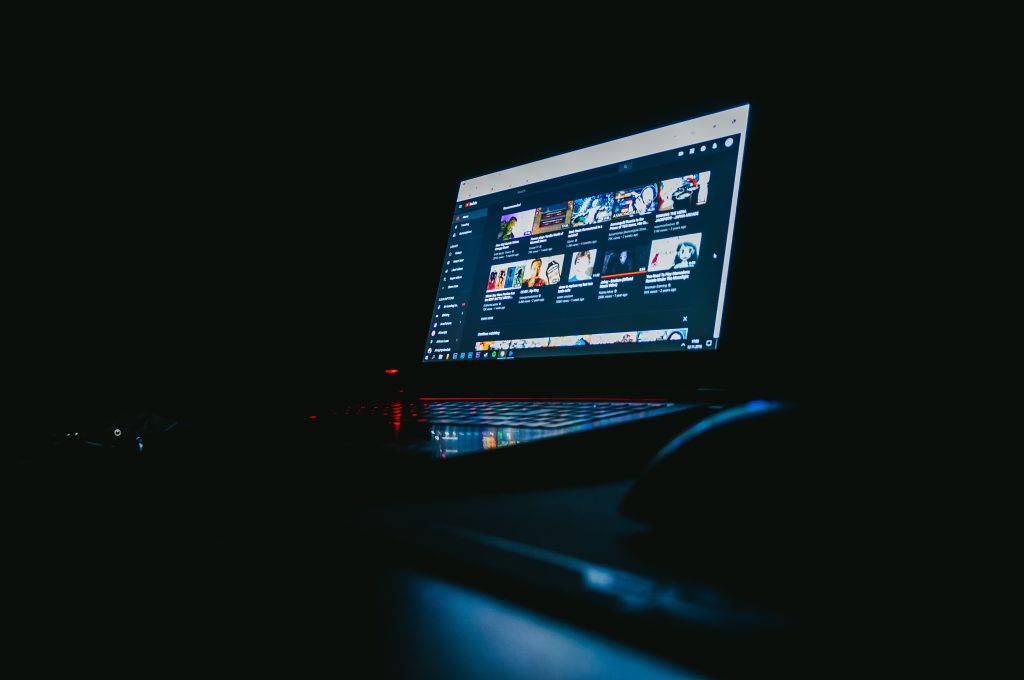
People are coming to your videos, leaving comments. You should respond to them if you want them to come back and be more engaged because nobody else is doing it. So it’s a great way to stand out. Comments don’t help, though, and they used to help a lot more engagement factors, like giving a thumbs up or giving comments would mean, Oh, they’re engaged,” YouTube’s gotten so smart with the watch time, that’s what they pay attention to. So if you leave a comment, but you bounce, you’re not going to get recommended more videos from that channel. But if you watch the whole video and never commented or never hit the like button, you will get recommended a lot more. They just care about watch time on the account.
So you should care about watch time, and you should be looking at the charts to see where people are dropping off in terms of watch time on your videos, and maybe redoing that and certainly not excerpting the low watch time components of your videos for social media. Find the stuff that’s juicy bits where watch time is up, right?
Watch time is so much more important than views count.Evan Carmichael
Yeah, I love data. I love making data-driven decisions. And so YouTube gives you the best data of all the platforms where with every video, it’ll show you what’s called the Audience Retention Curve, which is basically where people are falling off in your video. And the two suggestions I have for that is, your goal should be 70% at one minute. So one minute in the video, you still have 70% of the people watching the video. That’s a really hard number to hit. It doesn’t sound like a big number, but it’s a really hard number to hit. Because if they’ve committed for a minute, they’ll watch nine more. It’s really what’s happened in the first minute. They care about SEO, and they see your video, and they’ve given you the first minute. You’ve done enough to hook them. You’d have to suck or do something really stupid afterward to lose them. You just see this slow trickle down. But it’s in that first minute that people make the decision. “I don’t know. Do I believe this guy? Do I care about this guy? Is he giving me good information?” before they move on to something else. So 70% at one minute, super important that we look at.
YouTube gives the best data of all the platforms. With every video, it'll show what's called the Audience Retention Curve, which is basically where people are falling off in the video. Share on XThen you’re also looking for any spikes in the curve, which means that people often rewound to watch that part again. So if you’re talking about SEO strategies, it’s a 40-minute video, and at the 22-minute mark, you see a spike. Let people reroute like, “Wait, what did he say? What was that thing again?” they rewound the video to watch it again. That’s the clip that you cut, and you take to LinkedIn and Twitter and Instagram and all the other platforms. So YouTube is your home for long-form content, and then you cut up the best piece without having to think about it. Like it’s not an opinion, you might have liked everything. I like everything in my videos, but it’s not always something that people relate to. It’s like, “That’s the thing that people liked? Okay, cool.” So we cut that, and then we put it to your other social platforms. And that allows me to put up five pieces of content a day, to all the other platforms as well, because I’m just creating content for YouTube and cutting it.
Yeah, very good. And so End Cards tend to be about getting people to subscribe and watch another video. What will be the best practice example of an End Card besides yours that people should emulate?
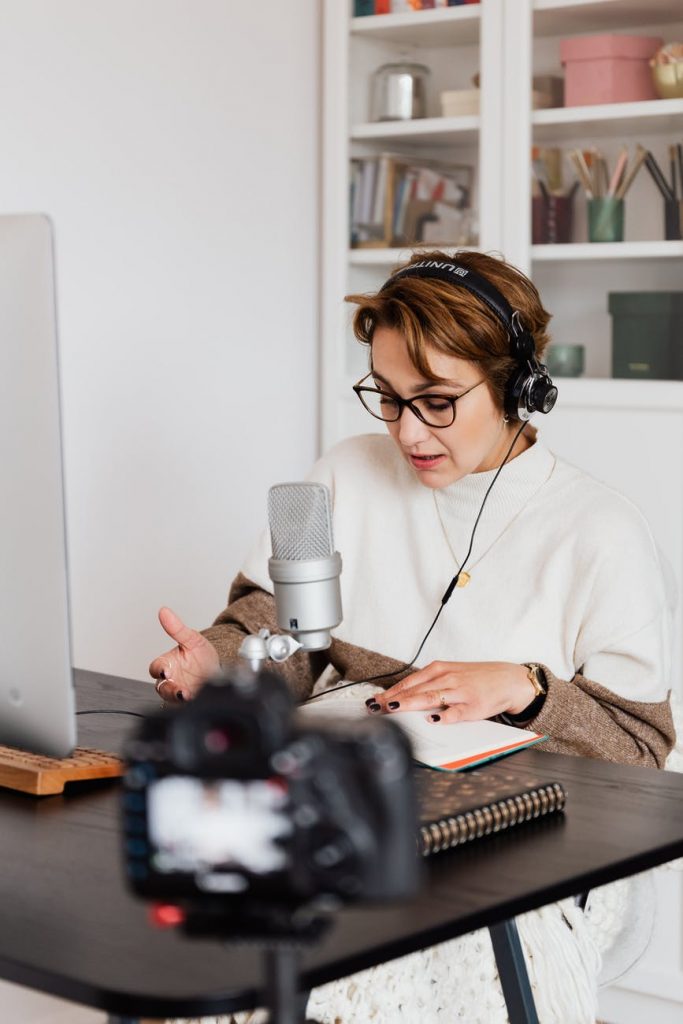
So End Cards, if people don’t know, you have 20 seconds at the end of every video to have clickable things on your video. So they can click on to your website, they can click on to subscribe to your channel, they can click on to other videos where throughout the whole rest of the video of your 20-minute video, they can’t click on anything but that last 20 seconds is super important. Your number one goal is to get people to watch another video. I never say subscribe to my channel. If you think about your patterns for subscribing to channels, you likely did not subscribe to a channel because the person said to subscribe to my channel. You subscribe to the channel because you watched one video, and then you went to their YouTube page, and you saw another video, and you watched a couple of them and say “I like this person,” and so you subscribed. So that’s your goal, right? That’s what you want to reverse engineer. So teaching them to watch five, six, seven, eight videos.
So the biggest thing at the End Card is what I said earlier before you release a video, you have to think about what is the most relevant current video on my channel so that you can pitch it at the end of the video. You’ve got 20 seconds to do it. And if you have no editing capabilities, I would then just say hey, you have to go watch this video here, where I talk about on-page SEO factors and the eight things that you know you’re making mistakes on whatever you pitch that video for 20 seconds and you’re looking at pointing to it. If you have editing capabilities, then you have 10 seconds to pitch the video. And then you use those last 10 seconds to pull the highlight moments from that other video and showcase it on screen. Whatever the best moments are. And again, you don’t have to think about it. It’s in the audience retention curve, it’ll show you what the best moments are, and you put that in the last 10 seconds. And then you put an arrow from the video now to like, go click on that video to go make a watch.
Oh, fabulous. I know we got to wrap. Where do we send our listeners to learn more from you? Do have a course. Do you have a book? Where can they learn all the YouTube secrets?
It’s crazy how time flies when you’re having fun.
Your number one goal on YouTube is to get people to watch another of your videos. Share on XI know.
I have a course you can pick it up, YouTube Growth Bootcamp is what it’s called. Otherwise, I have my website, my YouTube channel, and you could watch what I’m doing. I eat my own dog food. So all of this stuff that I’m talking about, we are applying. And if you ever want to know the latest of what I’m doing, just go watch my latest video, because that’s our latest strategy.
Very good. Well, thank you so much, Evan. Thank you, listeners, we’ll catch you on the next episode.
Important Links
- Evan Carmichael
- YouTube – Evan Carmichael
- Facebook – Evan Carmichael
- Twitter – Evan Carmichael
- Instagram – Evan Carmichael
- LinkedIn – Evan Carmichael
- YouTube Growth Bootcamp
- Genius Network
- TubeBuddy
- Vevo
Your Checklist of Actions to Take









About Evan Carmichael
 Evan Carmichael #Believes in entrepreneurs. Gary Vaynerchuck called him the DJ who inspires people and Ed Mylett called him the modern-day Napoleon Hill. At 19, he built then sold a biotech software company. At 22, he was a venture capitalist raising $500k to $15M. He now runs a YouTube channel for entrepreneurs with over 2 million subscribers and 300 million views, wrote 4 books, and speaks globally. He wants to solve the world’s biggest problem, people don’t #Believe in themselves enough. Forbes named him one of the world’s top 40 social marketing talents and Inc. named him one of the 100 great leadership speakers and 25 social media keynote speakers you need to know. He’s set 2 world records, uses a trampoline & stand-up desk, owns Canada’s largest salsa dance studio where he met his wife, and has a giant Doritos bag in front of him all day long to remind him that he’s stronger than the Doritos. Toronto is his home. He’s a husband, father, TSM Fan, and Teemo main.
Evan Carmichael #Believes in entrepreneurs. Gary Vaynerchuck called him the DJ who inspires people and Ed Mylett called him the modern-day Napoleon Hill. At 19, he built then sold a biotech software company. At 22, he was a venture capitalist raising $500k to $15M. He now runs a YouTube channel for entrepreneurs with over 2 million subscribers and 300 million views, wrote 4 books, and speaks globally. He wants to solve the world’s biggest problem, people don’t #Believe in themselves enough. Forbes named him one of the world’s top 40 social marketing talents and Inc. named him one of the 100 great leadership speakers and 25 social media keynote speakers you need to know. He’s set 2 world records, uses a trampoline & stand-up desk, owns Canada’s largest salsa dance studio where he met his wife, and has a giant Doritos bag in front of him all day long to remind him that he’s stronger than the Doritos. Toronto is his home. He’s a husband, father, TSM Fan, and Teemo main.







Leave a Reply